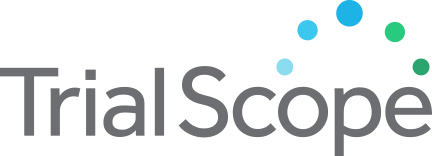Myofascial Dysfunction in Post Stroke Shoulder Pain
Study Purpose
Shoulder pain is extremely common after stroke and occurs in 30-70% of patients. The pain may begin as early as one week after stroke, although peak onset and severity occurs around four months, and persists into the chronic stage. Chronic post stroke shoulder pain (PSSP) interferes with motor recovery, decreases quality of life, and contributes to depression. PSSP is thought to be caused mainly by damage to the myofascial tissues around the shoulder joint. Interestingly, an MRI study in patients with PSSP showed that the degree of structural damage to the muscles did not correlate with the degree of pain. Thus, the pathophysiology of myofascial dysfunction and pain in PSSP has not been elucidated leading to missed opportunities for early diagnosis and variable success with pain management. The accumulation of hyaluronic acid (HA) in muscle and its fascia can cause myofascial dysfunction. HA is a glycosaminoglycan (GAG) consisting of long-chain polymers of disaccharide units of glucuronic acid and N-acetylglucosamine and is a chief constituent of the extracellular matrix of muscle. In physiologic quantities, HA functions as a lubricant and a viscoelastic shock absorber, enabling force transmission during contraction and stretch. Reduced joint mobility and spasticity result in focal accumulation and alteration of HA in muscle. This can lead to the development of stiff areas and taut bands, dysfunctional gliding of deep fascia and muscle layers, reduced range of motion (ROM), and pain. However, the association of muscle HA accumulation with PSSP has not been established. The investigators have quantified the concentration of HA in muscle using T1rho (T1ρ) MRI and found that T1ρ relaxation time is increased in post stroke shoulder pain and stiffness. Furthermore, dynamic US imaging using shear strain mapping can quantify dysfunctional gliding of muscle that may generate pain during ROM. Myofascial dysfunction can result in non-painful reduction in ROM (latent PSSP), which may become painful due to episodic overuse injury producing greater shear dysfunction (active PSSP). Hence, shear strain mapping may differentiate between latent versus active PSSP. Thus, quantitative Motor Recovery (MR) and US imaging may serve as useful biomarkers to elucidate the pathophysiology of myofascial dysfunction.
Recruitment Criteria
|
Accepts Healthy Volunteers
Healthy volunteers are participants who do not have a disease or condition, or related conditions or symptoms |
No |
|
Study Type
An interventional clinical study is where participants are assigned to receive one or more interventions (or no intervention) so that researchers can evaluate the effects of the interventions on biomedical or health-related outcomes. An observational clinical study is where participants identified as belonging to study groups are assessed for biomedical or health outcomes. Searching Both is inclusive of interventional and observational studies. |
Interventional |
| Eligible Ages | 18 Years and Over |
| Gender | All |
Trial Details
|
Trial ID:
This trial id was obtained from ClinicalTrials.gov, a service of the U.S. National Institutes of Health, providing information on publicly and privately supported clinical studies of human participants with locations in all 50 States and in 196 countries. |
NCT06718413 |
|
Phase
Phase 1: Studies that emphasize safety and how the drug is metabolized and excreted in humans. Phase 2: Studies that gather preliminary data on effectiveness (whether the drug works in people who have a certain disease or condition) and additional safety data. Phase 3: Studies that gather more information about safety and effectiveness by studying different populations and different dosages and by using the drug in combination with other drugs. Phase 4: Studies occurring after FDA has approved a drug for marketing, efficacy, or optimal use. |
Phase 2 |
|
Lead Sponsor
The sponsor is the organization or person who oversees the clinical study and is responsible for analyzing the study data. |
Johns Hopkins University |
|
Principal Investigator
The person who is responsible for the scientific and technical direction of the entire clinical study. |
Ning Cao, MD |
| Principal Investigator Affiliation | Johns Hopkins University |
|
Agency Class
Category of organization(s) involved as sponsor (and collaborator) supporting the trial. |
Other, NIH |
| Overall Status | Recruiting |
| Countries | United States |
|
Conditions
The disease, disorder, syndrome, illness, or injury that is being studied. |
Stroke |
Contact a Trial Team
If you are interested in learning more about this trial, find the trial site nearest to your location and contact the site coordinator via email or phone. We also strongly recommend that you consult with your healthcare provider about the trials that may interest you and refer to our terms of service below.
